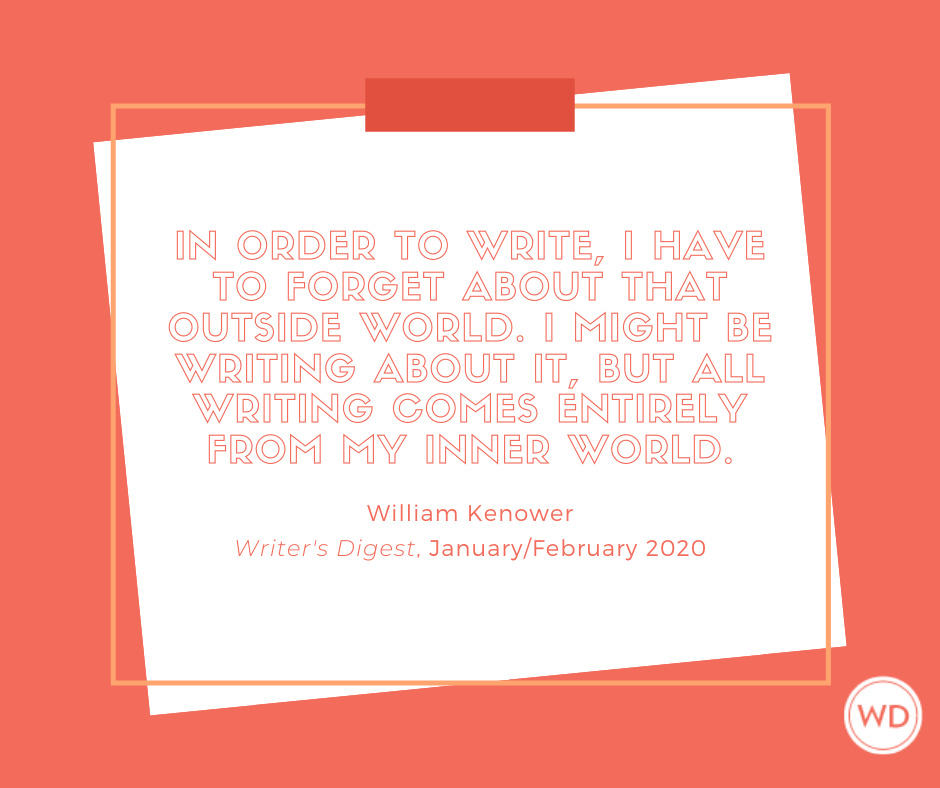Doing More With Less
Learn three ways to take your fiction scenes from the boring to the best-seller list.
One of the most basic techniques of writing fiction is to write in scenes. A child tells the stories of his day at school in long, rambling recitations of events ("... and then Janie told me what Hannah told her, only I said I didn't believe her, so Emily ..."), but only a doting parent is likely to actually follow these tortuous narratives. For the professional writer, stories must be presented as a series of individual scenes, each one dramatized with dialogue and telling descriptions of who is present and what they're all doing.
But what if you're already writing in scenes, and your work still isn't selling? There could be many answers to this. But let's look at one common problem: the scene that is successful in itself, but too limited. By "successful in itself" I mean that your scene accomplishes the basics. It opens by orienting us (who, where, when), continues with plausible characters interacting in logical ways, includes some interesting details, and is written in decent prose. That should be enough, but often it's not. It could be that your otherwise good scene is simply not doing enough things for the story as a whole. You need to add more elements to the basic scene so that it carries more weight.
This is easiest to see with a concrete example. Let's say the opening scene of your chapter takes place at the dinner table of the Drake family. You know what you want this scene to do: develop characterization of key story people, Angela and Tom Drake and their 16-year-old twins, boisterous Jill and her techno-nerd brother, Allen. You write the scene as a four-way argument about Jill's dismal grades. Angela and Tom, ambitious for their children, are angry; Jill is defiant; Allen drops snide and superior comments. When you finish writing, you're convinced that the scene gives the reader strong portraits of everyone, as well as of their social milieu.
So what's wrong with it? Nothing—except that it's only doing one thing. It characterizes well, but that's all the scene does. It would be much richer if it also met at least one of three other objectives: advancing the plot, foreshadowing later events or braiding in subplots.
Advancing the plot
Jill's grades are not important to the main plotline of this novel, which is (or will eventually be) a ghost story. As a result of differing ideas about religion and the supernatural, the Drakes' marriage will unravel and their children will leave home. How can you use the dinner table scene to advance this plot as well as characterize your four people?
You might have the family argue about something else besides Jill's grades—something that leaps right into the story. Perhaps Jill has heard strange noises in the night or noticed that things have been moved to different locations in her room. Allen, the budding rationalist, pooh-poohs all that. The parents worry that Jill has an overactive imagination, bordering on the pathological. This version of the scene introduces the idea of the supernatural and holds both more relevance and more tension than the fight over grades.
Or, you might reverse the order of your scenes. Open the story with a sighting of the ghost, who is in fact Angela's mother. Is it really a ghost, or an angel, or a figment of Jill's imagination? She's the only one present, and although we're in her point of view, the next scene at the dinner table casts doubt on what she thinks she saw. Allen dismisses the whole thing. Tom and Angela gently remind Jill—and inform us—that Jill has had hysterical episodes in the past.
Written in this order, the dinner table argument not only characterizes everyone,it advances the plot by giving us new information on a relevant topic—that of Jill's previous hysteria. Suddenly we, too, are not so sure of what she saw. The scene is a reversal of what went before, and reversals are always good for tension.
There are many ways you could rewrite this story opening. The point is to pick one that characterizes your people while they're involved with the main plot, not before it begins. That way, the scene does double duty.
Foreshadowing events
Now let's make the scene do triple duty. One of the outcomes of this ghost story will be the unraveling of Angela and Tom's marriage. Angela becomes increasingly convinced that her daughter is right and the world of spirits does indeed exist, while Tom hardens in his belief that Jill is mentally ill. As the scene is described above, Jill's parents are in agreement about her hysteria. But with a little rewriting, you can foreshadow the later split. It doesn't have to be a vicious, full-blown argument between Tom and Angela. In fact, it shouldn't be, since at this point they have a strong marriage. But you can still hint at the dissension to come.
How you do this depends on whose point of view you're in. Let's say it's Angela's. You might then put in a reference like this one:
Angela looked at Tom. He was right about Jill, of course he was, he was so much smarter than the rest of them. But ... she gazed again at Jill's set, teary face. Jill seemed so convinced. "Tom ..." Angela said hesitantly. "I'm not listening to any more of this nonsense," Tom said, and Angela wound her hands tightly together in her lap.
In Tom's, Jill's or Allen's POV, the foreshadowing of a marital split would read differently. But including it in some form would still add a third purpose to the scene.
Braiding in subplots
Since this is a novel rather than a short story, it will eventually include subplots. Let's say that one of these involves Angela's sister Susan, a devout Catholic who is in unrequited love with her parish priest. The dinner table scene is not about Susan or her disastrous crush, and you don't want to bring it in now because it will dilute the emphasis on Jill. You can still enrich the scene by using a type of foreshadowing known as "braiding."
Braiding means that you add elements to a scene specifically designed to lead into the next scene. Thus, you include a few suggestive mentions of Susan, definite enough to prepare her entrance into the story, but vague enough not to shift the focus before she does. For example:
The phone rang, startling them all. "Let the machine get it," Tom said, irritated. Angela thought, "That's Susan." She was glad to accept Tom's order. She didn't feel up to dealing with her sister just now.
Then, later in the scene:
Angela winced. "Angela?" Tom said. "Did you want to add something, honey?" "No," Angela said. For a moment, Jill had sounded just like Susan.
The scene ends, say, with Jill storming off to her room. Tom and Angela look at each other helplessly. Allen says dismissively, "She'll get over it. She always does." And your next scene features Angela and Susan, which we're interested to read because you've set it up by braiding hints throughout. Braiding adds a fourth purpose to the dinner table scene.
Does this mean that every single scene you write must somehow serve all four purposes? No. But the more of them you can include, the richer the texture of your novel will be, and the more eager your readers will be to keep turning the pages.
This article appears in the January 2003 issue of Writer's Digest.
Nancy Kress' latest book is Probability Moon, a novel told in multiple, middle-distance third person, for maximum flexibility.









